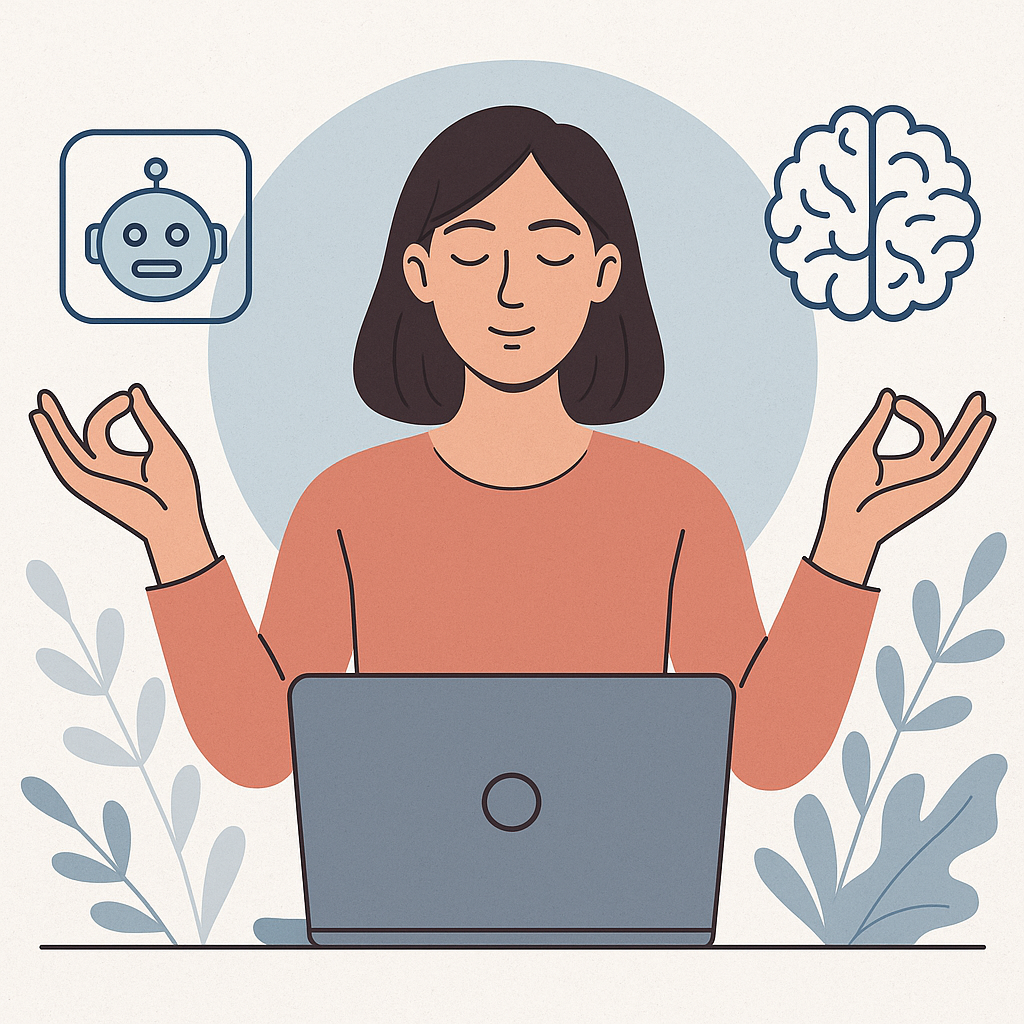
Technology has become inseparable from daily life, yet its impact on mental wellbeing is complex. While constant digital connection contributes to rising anxiety, artificial intelligence (AI) is also emerging as a potential tool to support emotional resilience. This article considers whether AI may help individuals achieve a restored balance in how they manage stress and mental health challenges.
The Stress Paradox in the Digital Age
The digital world has reshaped communication, work, and even relaxation. But increased screen time, endless notifications, and the expectation of being always available are major contributors to anxiety. A survey conducted by the Australian Bureau of Statistics revealed that more than 1 in 6 Australians experienced an anxiety-related condition in the past year, with digital overload cited as a growing contributing factor.
Sleep disruption is another major issue. Blue light exposure from screens suppresses melatonin, making it harder for people to unwind. Meanwhile, work-from-home culture often extends the working day, blurring boundaries between professional and personal life. These overlapping pressures leave many people searching for strategies to regain equilibrium.
For further insight into how constant connectivity affects mental health, readers may find Digital burnout in the age of AI a useful resource.
How AI Tools Are Supporting Mental Wellbeing
AI-Powered Chatbots and Therapy Aids
AI-powered chatbots are becoming more sophisticated, offering guided conversations that replicate aspects of therapy. While they cannot provide deep empathy, they may support users with reminders, reflective questions, and structured exercises grounded in cognitive behavioural therapy. Apps like Woebot and Wysa have already reached millions of users globally, highlighting the appetite for accessible support.
Predictive Analytics for Stress Detection
Wearable devices paired with AI can analyse heart rate, sleep, and activity patterns to detect early signs of stress. Some workplace wellness programs now integrate these tools, giving employees the option to monitor stress levels and receive prompts to rest, hydrate, or move around. These seemingly small interventions may prevent chronic stress from escalating into more serious issues.
Virtual Companions for Emotional Support
Some AI-driven applications provide companionship to reduce loneliness, an often-overlooked factor in mental health. While ethical concerns remain about dependency on digital companions, they demonstrate the potential of AI to fill gaps in emotional support, particularly for those without immediate access to traditional care.
For readers interested in the healthcare applications of AI, How AI is shaping healthcare innovation explores these developments in greater depth.
AI and Human Therapists: Partners, Not Competitors
One of the strongest arguments for integrating AI into mental health care is not replacement but support. AI may manage simple check-ins, track patterns over time, and provide consistent reminders, leaving therapists to focus on the deep emotional work that requires human empathy.
This collaborative model reflects the reality that while technology offers valuable assistance, true healing often requires a personal, human connection. Professional counselling services such as Restored Balance illustrate how compassion, empathy, and evidence-based approaches complement the growing role of digital tools. Together, technology and therapy may create a more accessible and holistic approach to emotional resilience.
Practical Strategies for Building Resilience with AI
Digital Wellness Habits
AI-powered wellbeing apps may encourage users to adopt healthy digital habits. For instance, automated reminders to take screen breaks or guided breathing exercises can help reduce stress throughout the day.
Using AI Intentionally
The key lies in intentional use. Rather than allowing algorithms to dictate attention through endless scrolling, individuals may actively choose how they engage with technology, using AI to strengthen resilience instead of weaken it.
When to Seek Professional Guidance
Even with AI’s capabilities, some challenges require more than digital assistance. Professional therapists provide the nuanced care, personalised strategies, and emotional understanding that AI cannot replicate. Acknowledging this boundary helps maintain a healthy relationship with technology while also ensuring proper care when needed.
For more on the challenges of balancing AI’s benefits with its risks, readers may consider Ethics of AI in mental health.
Case Study: Blending AI and Therapy in Practice
Consider a professional working in a high-stress corporate role. They use a wearable that tracks heart rate variability and sleep quality, paired with an AI wellbeing app. Over time, the AI identifies a pattern: spikes in stress coincide with late-night emails. The app sends reminders encouraging the user to disconnect earlier in the evening, while also recommending breathing exercises.
At the same time, the individual engages with a counsellor through a service like Restored Balance, where sessions focus on deeper issues such as workplace boundaries and long-term coping mechanisms. Together, AI and professional therapy provide both immediate and lasting support — an example of how digital tools and human connection may complement each other.
The Future: Restoring Balance at Scale
Looking ahead, AI may play a greater role in public health by offering scalable support for stress management. Imagine national mental health programs where AI assists with early detection of anxiety, delivering timely resources to those in need. In rural or underserved areas, AI-powered platforms could bridge access gaps, ensuring people receive support before their condition worsens.
At the same time, risks remain. Data privacy is a concern, as mental health information is highly sensitive. Dependence on algorithms may also risk reducing human connection rather than reinforcing it. The challenge is to design systems that empower individuals, preserve privacy, and uphold ethical standards.
If developed responsibly, AI has the potential to help society achieve a restored balance, ensuring technology enhances human wellbeing rather than undermining it.
Conclusion
AI has the potential to transform how society approaches mental health, but it is best seen as an ally rather than an answer. By combining mindful use of technology with professional support, individuals may build stronger resilience in an era of constant digital connection. Ultimately, balance comes not from the tools themselves but from how wisely they are integrated into everyday life.